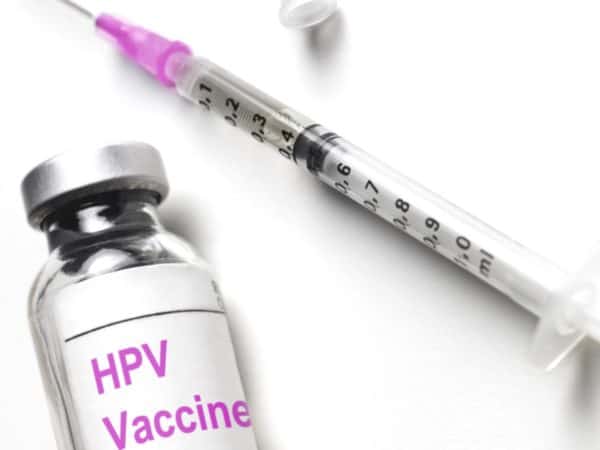
 A new report by the Canadian Cancer Society finds that mouth and throat cancers caused by the human papillomavirus (HPV) are on the rise among men and are set to surpass the rate of cervical cancer in females, leading the CCS to urge more Canadian provinces to establish HPV vaccination programs for boys as well as girls.
A new report by the Canadian Cancer Society finds that mouth and throat cancers caused by the human papillomavirus (HPV) are on the rise among men and are set to surpass the rate of cervical cancer in females, leading the CCS to urge more Canadian provinces to establish HPV vaccination programs for boys as well as girls.
HPV is the most common sexually transmitted disease in Canada and the world, with most sexually active people likely contracting an HPV infection at some point in their lives – often without knowing it, as most infections clear up within two years without physical symptoms.
The virus is known to be responsible for 25 to 35 per cent of mouth and throat cancers, 40 to 50 per cent of penile cancers and all cases of cervical cancers, the latter of which is the impetus behind HPV vaccination programs across the country which began in the mid-2000s.
All Canadian provinces and territories offer vaccination programs for girls, with coverage rates currently ranging between 43 per cent and 91 per cent. Yet, only six provinces (Alberta, Manitoba, Nova Scotia, Ontario, PEI and Quebec) and no territories have expanded their programs to include vaccination for boys, a situation the CCS sees as troubling in light of the new evidence on the rise in mouth and throat cancers in males.
“If you look at the trends there we’re seeing that cervical cancer is relatively stable,” said Leah Smith, epidemiologist with the Canadian Cancer Society. “But rates of HPV mouth and throat cancers in males are increasing.”
While the cause of the rise in male cancers is still unknown, the CCS says that changes in sexual behaviours where more people are engaging in oral sex may be partly to blame, but it’s likely that the rise is linked to the different ways that male and female immune systems respond to HPV.
“It does seem that the male immune system is responding differently to HPV infection than the female immune system,” says Smith. “What we are seeing is men are more likely to get an oral HPV infection and then once they get the oral HPV infection, are less likely to clear [the infection.] It’s the persistence of HPV infection that ultimately lead to cancer.”
Currently, one in three HPV cancers in Canada are diagnosed in men.
A new study from the University of New Mexico has found a significant decrease in the incidence rate of cervical abnormalities among women aged 15 to 19 and 20 to 24 years old, a result that researchers attribute to New Mexico’s HPV vaccination program which began in 2007. Each year since the vaccination program began, the rates of cervical abnormalities has decreased, say the study’s authors, which shows the program’s effectiveness.
“New Mexico sets itself aside from the rest of the United States by being the only state who has this type of surveillance program that results from a partnership between the University of New Mexico and the New Mexico Department of Health,” said Dr. Cosette Wheeler of the UNM Comprehensive Cancer Center.
Leave a Reply
You must be logged in to post a comment.




 Share
Share Tweet
Tweet Share
Share




Comment